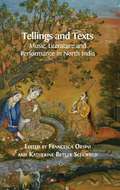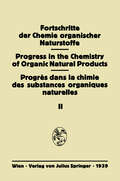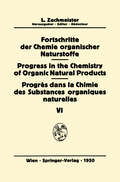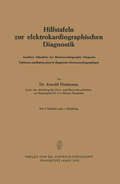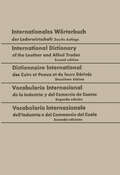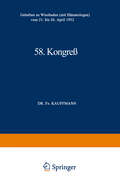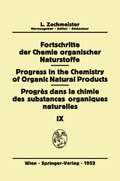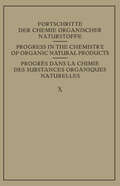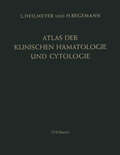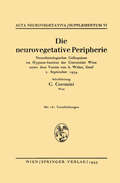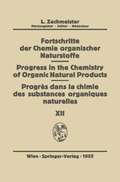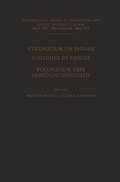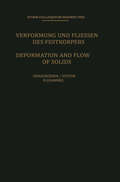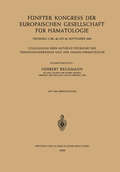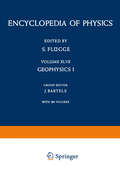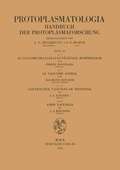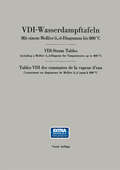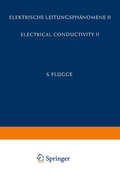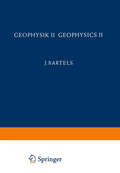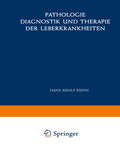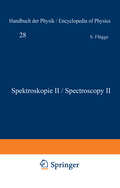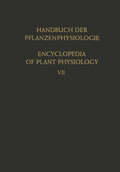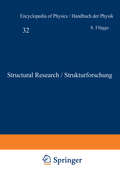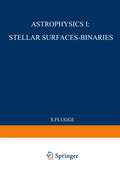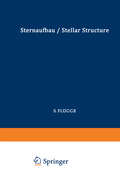- Table View
- List View
Tellings and Texts: Music, Literature And Performance In North India
by Francesca Orsini Katherine Butler SchofieldExamining materials from early modern and contemporary North India and Pakistan, Tellings and Texts brings together seventeen first-rate papers on the relations between written and oral texts, their performance, and the musical traditions these performances have entailed. The contributions from some of the best scholars in the field cover a wide range of literary genres and social and cultural contexts across the region. The texts and practices are contextualized in relation to the broader social and political background in which they emerged, showing how religious affiliations, caste dynamics and political concerns played a role in shaping social identities as well as aesthetic sensibilities. By doing so this book sheds light into theoretical issues of more general significance, such as textual versus oral norms; the features of oral performance and improvisation; the role of the text in performance; the aesthetics and social dimension of performance; the significance of space in performance history and important considerations on repertoires of story-telling. The book also contains links to audio files of some of the works discussed in the text. Tellings and Texts is essential reading for anyone with an interest in South Asian culture and, more generally, in the theory and practice of oral literature, performance and story-telling.
Fortschritte der Chemie Organischer Naturstoffe: Eine Sammlung von Zusammenfassenden Berichten (Fortschritte der Chemie organischer Naturstoffe Progress in the Chemistry of Organic Natural Products #2)
by Y. Asahina C. Dhere K. Freudenberg C. R. Harington E. L. Hirst F. Kuffner H. Rudy E. Späth G. Toth L. Zechmeister G. ZemplenDieser Buchtitel ist Teil des Digitalisierungsprojekts Springer Book Archives mit Publikationen, die seit den Anfängen des Verlags von 1842 erschienen sind. Der Verlag stellt mit diesem Archiv Quellen für die historische wie auch die disziplingeschichtliche Forschung zur Verfügung, die jeweils im historischen Kontext betrachtet werden müssen. Dieser Titel erschien in der Zeit vor 1945 und wird daher in seiner zeittypischen politisch-ideologischen Ausrichtung vom Verlag nicht beworben.
Fortschritte der Chemie Organischer Naturstoffe/Progress in the Chemistry of Organic Natural Products/Progrès Dans la Chimie des Substances Organiques Naturelles (Fortschritte der Chemie organischer Naturstoffe Progress in the Chemistry of Organic Natural Products #6)
by J. Bonner H.J.Jr. Deuel C. Dhere S. M. Greenberg O. Hoffmann-Ostenhof E. Lederer L. RetiHilfstafeln zur elektrokardiographischen Diagnostik: Auxiliary Schedules for Electrocardiographic Diagnosis Tableaux auxiliaires pour le diagnostic électrocardiographique
by Arnold HuttmannInternationales Wörterbuch der Lederwirtschaft / International Dictionary of the Leather and Allied Trades / Dictionnaire International des Cuirs et Peaux et de leurs Dérivés / Vocabulario Internacional de la Industria y del Comercio de Cueros / Vocabolario Internazionale dell’Industria e del Commercio del Cuoio: Deutsch — Englisch — Französisch — Spanisch — Italienisch / German — English — French — Spanish — Italian / Allemand — Anglais — Français — Espagnol — Italien / Alemán — Inglés — Francés — Español — Italiano / Tedesco — Inglese — Francese — Spagnolo — Italiano
by Walter Freudenberg58. Kongreß: Gehalten zu Wiesbaden (mit Hämatologen) vom 21. bis 26. April 1952 (Verhandlungen der Deutschen Gesellschaft für Innere Medizin #58)
by Professor Dr. KauffmannFortschritte der Chemie Organischer Naturstoffe/Progress in the Chemistry of Organic Natural Products/Progrès Dans La Chimie Des Substances Organiques Naturelles (Fortschritte der Chemie organischer Naturstoffe Progress in the Chemistry of Organic Natural Products #9)
by J. G. Baxter H. Borsook N. Bulman D. H. Campbell F. M. Dean H. H. Inhoffen H. M. Kalckar W. S. McNutt P. Meunier H. Siemer A. Stoll M. TomitaFortschritte der Chemie Organischer Naturstoffe / Progress in the Chemistry of Organic Natural Products / Progres dans La Chimie des Substances Organiques Naturelles (Fortschritte der Chemie organischer Naturstoffe Progress in the Chemistry of Organic Natural Products #10)
by K. Alder J. Asselineau A. Chatterjee L. Feinstein M. Jacobson E. Lederer H. Mark G. Rosenkranz M. Schumacher F. SondheimerAtlas der klinischen Hämatologie und Cytologie: In deutscher, englischer, französischer und spanischer Sprache
by Ludwig Heilmeyer H. BegemannDie diagnostischen Fortschritte der Ausstrichcytologie haben bisher nur ill beschei denem Umfang Eingang in die ärztliche Praxis gefunden. Ein wesentlicher Grund dafür ist die Tatsache, daß das vorhandene Abbildungsmaterial zu sehr typisiert wurde, um dem Anfänger eine Einarbeitung in dieses Gebiet zu ermöglichen. Die Ausmerzung dieses Mißstandes soll eine Hauptaufgabe des vorliegenden Buches sein. Aus diesem Grunde haben wir versucht, in den einleitenden Einzeltafeln und bei der Besprechung der einzelnen Krankheitsbilder durch Abbildung zahlreicher Übersichtstafeln die große morphologische Variationsbreite von Einzelzellen in Krankheitsbildern darzustellen. Mit Absicht wählten wir als Grundlage des Reproduktionsverfahrens das gemalte Bild: Ist schon die oft gerühmte photographische Objektivität für das Buntphoto höchst zweifelhaft, so geht diese bei der chemographischen Reproduktion von Buntphotos weitgehend verloren. Ein noch wichtigerer Grund ist der, daß das Mikrophoto praktisch nur eine Schichtebene scharf darstellen kann. Demgegenüber ist der mikroskopische Beobachter gewöhnt, durch fortwährendes Spiel mit der Mikrometerschraube verschiedene Ebenen zu be trachten und sich so ein plastisches Bild von der Zelle zu verschaffen. Die Möglichkeit, verschiedene Zellebenen gleichzeitig darzustellen, hat aber nur die Zeichnung, die dadurch den Verhältnissen der subjektiven Beobachtung näher kommt als das Photo. Auf die Schwarzweißdarstellung von Zellen haben wir bewußt verzichtet; ist doch die berechtigte Forderung der Histologen, den Lernenden von der Farbe ab- und auf die Struktur hin zulenken, bei der Ausstrichcytologie nur in wenigen Fällen erfüllbar. Die färberische Grundlage der gesamten Ausstrichcytologie bildet bisher die aus der Hämatologie über nommenen Färbemethoden.
Die neurovegetative Peripherie: Neurohistologisches Colloquium im Hygiene-Institut der Universität Wien unter dem Vorsitz von A. Weber, Genf 2. September 1954 (Acta Neurovegetativa Supplementa #6)
by Carmen CoroniniFortschritte der Chemie Organischer Naturstoffe/Progress in the Chemistry of Organic Natural Products/Progres dans la Chimie des Substances Organiques Naturelŀes (Fortschritte der Chemie organischer Naturstoffe Progress in the Chemistry of Organic Natural Products #12)
by G. W. Beadle A.J. Haagen-Smit T. G Halsall F. T. Haxo E.R.H. Jones R. Michel J. Roche K. Slotta A. R. Thompson E.O.P. Thompson R. Tschesche F. L. WarrenSubstances belonging to this group of organic compounds are wi,lely distributed in Nature, being found in plants, both higher and lower fungi and, upto the present time, in one animal source, sheep wool-fat. For a long time no real differentiation was possible between the tetra- and penta cyclic triterpenes and the sterols. Then the two latter became disting uishable by their selenium. ·dehydrogenation products, i. e. , picene and naphthalene derivatives from the pentacyclic triterpenes and DIELS' hydrocarbon from the sterols. It is now apparent that those compounds yielding predominantly I: 2: 8-trimethylphenanthrene on dehydro genation represent yet another class, and this property is regarded as typical of the tetracyclic triterpenes. The group contains both C and C 30 3l compounds and, although the latter fall outside RUZICKA'S strict definition of triterpenes (I42), it seems desirable to permit this deviation. Members with thirty-two carbon atoms may well be discovered in due course. In a most· valuable account of the triterpenes written in I949, JEGER. (II3) was able to summarize all that was known about the tetra cyclic group in a very small compass. Most of the work discussed in the present article has been published during the last five years and in that time the structures of some twenty compounds have been elucidated. Of outstanding importance is the revelation of close structural relation ships tQ the steroids, and the presence of C and C side-chains, skeletally 8 9 identical with those of cholesterol and ergosterol.
Colloquium on Fatigue / Colloque de Fatigue / Kolloquium über Ermüdungsfestigkeit: Stockholm May 25–27, 1955 Proceedings / Stockholm 25–27 Mai 1955 Comptes Rendus / Stockholm 25.–27. Mai 1955 Verhandlungen (IUTAM Symposia)
by Waloddi Weibull F. K. G. OdqvistUpon the request of the International Union of Theoretical and Applied Mechanics (IUTAM) the Swedish National Committee for Mechanics organized a colloquium on fatigue, which was held at the Royal Institute of Technology (Kung!. Tekniska Hogskolan) in Stock holm, May 25-27, 1955. 35 lectures were delivered, principally dealing with problems of statistical and basic nature. Among the topics were to be found statis tical theory of fatigue, cumulative damage, mechanism of fatigue, me tallurgical aspects on fatigue, velocity of fatigue cracks, fatigue at elevated temperature, and fatigue at combined stresses. Lectures were going on simultaneously in two sections. Each lecturer had 15 minutes for presentation of his communication, and afterwards 15 minutes were reserved for discussion. Abstracts of the lectures were distributed about a month before the colloquium. The colloquium was attended by 149 participants from the follow ing countries: Denmark (1), Finland (2), France (5), Germany (6), Italy (2), Netherlands (2), Norway (2), Poland (2), Saar (1), Spain (3), Sweden (100), Switzerland (1), United Kingdom (10), USA (8), USSR (3), and Yugoslavia (1). A complete list of the participants will be found below. The languages of the Colloquium were English, French, German and Italian. No lectures were delivered in Italian. Also, all contributions to the discussions have been translated to one of the first three languages. Statements and opinions advanced are always those of the individual authors or participants in the discussions.
Deformation and Flow of Solids / Verformung und Fliessen des Festkörpers: Colloquium Madrid September 26–30, 1955 / Kolloquium Madrid 26. bis 30. September 1955 (IUTAM Symposia)
by Richard GrammelFünfter Kongress der Europäischen Gesellschaft für Hämatologie, Freiburg i. Br., 20. bis 24. September 1955 / Cinquième Congrès de la Société Européenne d’Hématologie, Freiburg i. Br., Allemagne, 20–24 Septembre 1955: Colloquium über Aktuelle Probleme des Transfusionswesens und der Immun-Hämatologie / Colloque Concernant les Problèmes Actuels de Transfusion et d’Immuno-Hématologie
by Herbert BegemannLe Vacuome de la Cellule Végétale: Morphologie. Le Vacuome Animal. Contractile Vacuoles of Protozoa. Food Vacuoles (Protoplasmatologia Cell Biology Monographs #3 / D / 1,2,3a,3b)
by Pierre Dangeard Raymond Hovasse J.A. KitchingIt is also possible that contractile vacuoles originate by some form of phase separation not yet understood and possibly involving the contractile properties of proteins, and' it is possible that this process continues to operate in the walls of the vacuoles or feeder canals. This secretory process may be the function of that part of the vacuolar apparatus which blackens on impregnation with osmic acid, and which seems to possess some degree of permanence from vacuole to vacuole and in some cases from parent to daughter cell. Remarkably little is known about the mechanism of systole. General body turgor may contribute, but it is not essential. In ciliates the main force is local and probably comes from a tension in the wall of the vacuole itself, but it is not known whether or not this is an active contraction of an oriented protein layer. The critical process for the initiation of systole is probably the opening of the pore. It is possible that in ciliates there is a rhythmically operating independent timing mechani,sm by which the vacuolar cycle is controlled, but its existence has not been demonstrated.
VDI-Wasserdampftafeln / VDI-Steam Tables / Tables VDI des constantes: Mit einem Mollier (i, s)-Diagramm bis 800 °C / Including a Mollier (i, s)-Diagram for Temperatures up to 800°C / de la vapeur d’eau Comprenant un diagramme de Mollier (i, s) jusqu’à 800°C
by Werner KochMaßeinheiten, Bezeichnungen und Vereinbarungen. l In den internationalen Konferenzen über Maßeinheiten hat man sich in den letzten Jahren auf das MKS-System geeinigt mit den Grundeinheiten Meter, Kilogramm (Masse) und Sekunde. Einheit der Kraft 2 in diesem System ist die Kraft, die der Masse 1 kg die Beschleunigung 1 m/s erteilt; sie heißt Newton, ab 5 gekürzt N, es ist 1 N = 10 dyn. Einheit der Energie und damit auch der Wärmemenge ist das Newton Meter, das man mit Joule, abgekürzt J, bezeichnet, ein Joule ist gleich einer Wattsekunde. Einheit des Druckes ist das Newton je Quadratmeter. Da diese Größe recht klein ist, wird ein dezimales Vielfaches davon, 5 2 das Bar, benutzt, 10 N/m = 1 bar. Tempet"aturen werden gemessen in der Kelvinskala, definiert durch den absoluten Nullpunkt bei ° °K und den Tripelpunkt des Wassers bei 273,16 0K. Der Eispunkt, dem man bisher die Temperatur 273,16 °K zuschrieb, liegt dann bei 273,15 0K. Diese geringe Änderung von 0,01 °K gegen die frühere Festlegung ist praktisch belanglos. Die Benützung des MKS-Systems wird angestrebt, aber seine Einführung erfordert eine längere Über gangszeit, während der man auf die Kalorie und das Kraftkilogramm noch nicht wird verzichten können. Diese Einheiten verlieren aber ihre ursprüngliche Bedeutung als selbständige Grundeinheiten, sondern sie werden auf die Einheiten des MKS-Systems mit Hilfe von Umrechnungszahlen zurückgeführt.
Electrical Conductivity II / Elektrische Leitungsphänomene II (Handbuch der Physik Encyclopedia of Physics #4 / 20)
by O. Madelung A. B. Lidiard J. M. Stevels E. DarmoisGeophysik II / Geophysics II (Handbuch der Physik Encyclopedia of Physics #10 / 48)
by Julius Bartels45 downwards because (j on the average increases with height; but this conclusion does not follow from (18.3) when the dependency of Kc upon ~o is taken into consideration. s 2 ERTELl and PRIESTLEY and SWINBANK have shown that the upward eddy flux of sensible heat must be larger than indicated by (18.3), because this formula does not account for the fact that rising eddies are systematically warmer than sinking eddies because of the effect of buoyancy. The reader is referred to the reviews by SUTTON [22], [23] and PRIESTLEY and SHEP PARD [15) for further details concerning eddy-flux of heat and turbulent diffusion. 19. RICHARDSON'S criterion. The right-hand side of (15.10) represents the rate of production of eddy energy. The last term represents energy loss by dissipation; in order that the eddy energy shall be maintained, it is therefore necessary that P div V" - (! V" v" . grad. v > O.
Pathologie, Diagnostik und Therapie der Leberkrankheiten: Viertes Symposion vom 29. Juni bis 1. Juli 1956 (Freiburger Symposion an der Medizinischen Universitäts-Klinik #4)
by Hans A. KühnDieses Symposion über Leberkrankheiten steht unter einem besonderen Stern. Es ist jetzt gerade 30 Jahre her, daß Professor HANS EPPINGER die Leitung dieser Klinik übernahm und vier Jahre in Freiburg gmvirkt hat. Er hat die Patho physiologie der Leberkrankheiten mit seiner ungeheuer weitschauenden und geistvollen Art durchleuchtet und ein Gebäude errichtet, auf dem wir heute weiter bauen. Sein Licht ist in den Sturmesnächten des Kriegsendes erloschen, von vielen unbemerkt, und es ist an der Zeit, daß wir seiner hier in unserem Arbeits kreis gedenken. Ich begrüße bei dieser Gelegenheit ganz besonders seine Tochter, Frau Professor RüHL, sowie die Tochter von Frau RüHL, die Enkelin EPPINGE&s. Ich bin glücklich, daß sie uns die Freude gemacht haben, hier anwesend zu sein. Herr Professor BEIGLBÖCK hat die Aufgabe übernommen, das Lebenswerk EPPINGERs zu würdigen. Ich darf ihm dafür ganz besonders danken. Meine Damen und Herren! Ich darf Sie alle herzlich willkommen heißen und wünschen, daß Sie diese Tage mit Gewinn hier in Freiburg verleben, daß dabei nicht nur das Wissenschaftliche, sondern auch das Gesellige gedeihe, damit der Name "Symposion", den diese Arbeitstagung trägt, auch zu Recht bestehe.
Spektroskopie II / Spectroscopy II (Handbuch der Physik Encyclopedia of Physics #5 / 28)
by S. FlüggeStoffwechselphysiologie der Fette und Fettähnlicher Stoffe / The Metabolism of Fats and Related Compounds (Handbuch der Pflanzenphysiologie Encyclopedia of Plant Physiology #7)
by M. SteinerStructural Research / Strukturforschung (Handbuch der Physik Encyclopedia of Physics #6 / 32)
by Dr. André Guinier Dr. Gérard Eller Dr. J. Bouman Dr. Gérard Fournet Professor Dr. Beeman Professor Dr. Kaesberg Dr. J. Anderegg Dr. M. Webb Professor Dr. Raether Dr. G. Ringo107 In this way the absolute values of the structure factors may be found, not the phases (6. 8). The problem to find these phases is the phase problem. The present article will treat the following topics. At first the description of the ideal crystal will be given in Chap. B. The underlying principles of this description are the concepts of reciprocal lattice, FOURIER synthesis and sym metry. The evaluation of the intensity will then follow in Chap. C and D. Chap. E is concerned with the phase problem and related topics. Though this article treats the analysis of crystal structures, the fundamental concepts for other structures will here be found too. But these topics, and the experimental methods, will l find their place elsewhere . B. Description of the crystalline state. I. Lattice theory. a) The direct lattice. 8. Introduction. In Sect. 3, a description of the ideal crystal was given: The space, occupied by a crystal, is divided into congruent parallelepipeds, each with the same orientation. This parallelepiped is defined by the three basic vectors, a, band c, drawn from an origin 0 (Fig. 2), and is called the primitive cell. This cell is filled with atoms (or ions), and the same configuration of atoms is repeated in space. It has been aptly called a three-dimensional wallpaper, as on a wallpaper the same pattern is repeated again and again.
Astrophysik I: Sternoberflächen-Doppelsterne / Astrophysics I: Stellar-Surfaces-Binaries (Handbuch der Physik Encyclopedia of Physics #11 / 50)
by S. FlüggeAstrophysik II: Sternaufbau / Astrophysics II: Stellar Structure (Handbuch der Physik Encyclopedia of Physics #11 / 51)
by Marshal H. Wrubel H. C. Arp G. R. Burbidge E. Margaret Burbidge Hans E. Suess Harold C. Urey Lawrence H. Aller P. Ledoux Th. Walraven Armin J. Deutsch E. Schatzman Cecilia Payne-Gaposchkin F. ZwickySects. 12, 13. 89 sequence and that subgiant and fainter stars in globular clusters have ultraviolet excesses. When dealing with stars whose physical properties are imperfectly under stood, such as in globular cluster stars, we cannot rely too heavily on the empiri cal calibration by the kinds of stars used to define Fig. 5, to determine their true, unreddened U-B, B-V curve. But if by a combination of arguments, principally the reddening in the region of the stars we do known about, we can assign a fairly probable unreddened U-B, B-V curve to a group of stars about which we know little, the argument may be turned around. In this case some information may be gained about the energy envelope of the stars by examining the differences between the normal two-color index curves for the unknown group of stars compared to the known. In general there seem to be two possible causes for different stars defining different normal sequences in the U-B, B-V plane. One, the relative energy distribution in the continuum in the U, B and V photometry bands are different. An example of this is the effect of the Balmer depression in supergiants. This, of course, requires deviation from black body radiation curves for one or both groups of stars. This cause seems to be the dominant effect for very blue, hot stars where the depression of the continuum by absorption lines is at a minimum.
